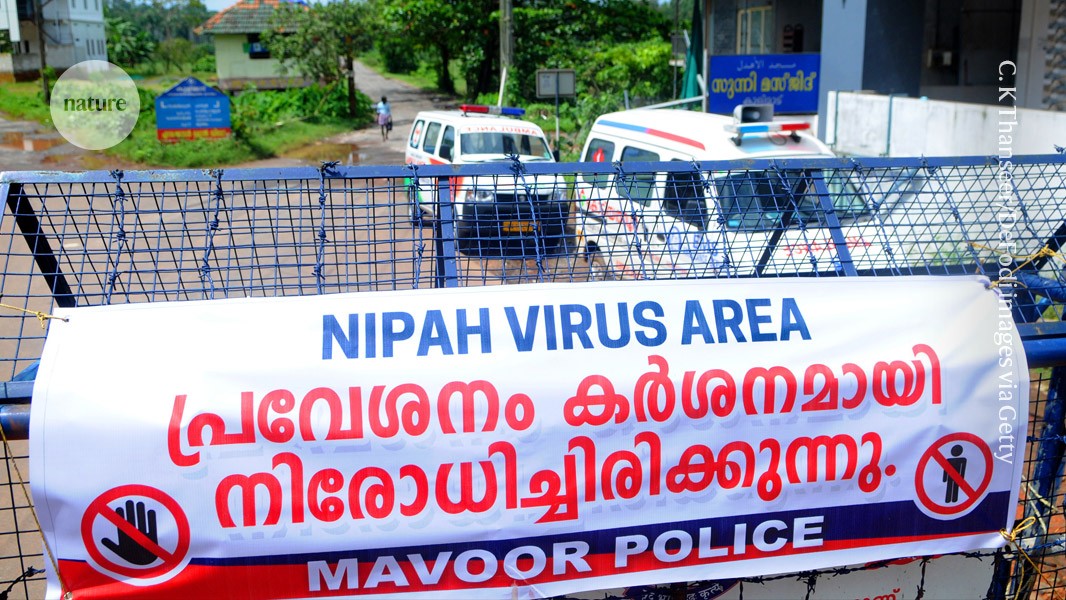Promising vaccine against deadly Nipah virus can also treat infection

In animals, the drug reduced the effects of the virus, which currently has no treatment

There are no approved vaccines or treatments for Nipah virus. Cases have been reported in Bangladesh, India and Malaysia.Credit: C. K Thanseer/DeFodi images via Getty
A drug that targets two parts of the deadly Nipah virus protects against infection in hamsters. And once an animal is infected, the drug can also stop it from becoming treatment resistant, according to a study published in Nature Structural and Molecular Biology this week.
“This is a revolution in the right direction,” says Vinod Balasubramaniam, a molecular virologist at Monash University Malaysia in Subang Jaya.
The rare bat-borne RNA virus can cause respiratory distress, fever and fatal brain inflammation, with a mortality rate of up to 75%. The virus has been reported in Bangladesh, India and Malaysia, and can spread from bats and pigs to people through close contact with an infected animal or their bodily fluids. It can also spread from person to person. There are no approved vaccines or treatments.
Daniel Watterson, a co-author who studies viruses at the University of Queensland, Australia, says he is hopeful that the treatment could be used to prevent infections and treat people with the disease.
Help from Pedro
Watterson and his colleagues in Chile and Australia identified a nanobody, a small fragment of an antibody, called DS90, that targets HNV fusion protein, which the virus uses to infect cells. The nanobody was isolated from an alpaca called Pedro. Alpacas and camelids are the only known land-animals that make nanobodies. The nanobody was shown to neutralize several strains of Nipah virus in cell-based experiments. DS90 also neutralized the deadly Hendra virus, which is in the same family as Nipah virus and lacks treatments.
The team then fused DS90 to a monoclonal antibody currently in phase I trials as an immunotherapy for Nipah virus. The antibody, called m102.4, targets a receptor-binding protein that helps the virus to enter cells. The DS90–m102.4 antibody could better defend cells against Hendra virus and different Nipah virus strains than could DS90 or m102.4 alone. The combined antibody could also protect cells from mutated viruses that evaded treatment with just DS90 or m102.4.
In hamsters exposed to the Nipah virus, the combined antibody offered 100% protection against the virus over 28 days. A control antibody provided no protection.
When the team used the antibody to treat hamsters one day after they were infected with Nipah virus, it was 50% effective at preventing disease and delayed death by 4 days. All animals in the control group became infected and died by day 6.
Login or create a free account to read this content
Gain free access to this article, as well as selected content from this journal and more on nature.com
or
Sign in or create an accountdoi: https://doi.org/10.1038/d41586-025-02173-x
This story originally appeared on: Nature - Author:Rachel Fieldhouse


















